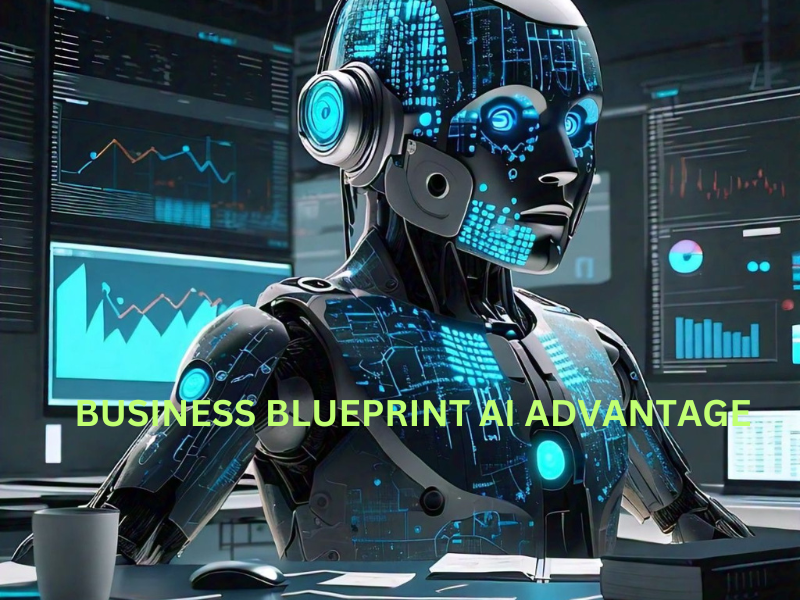Business Blueprint AI Advantage is no longer a distant concept but a key driving force in modern business strategies. The rapid advancement of AI technologies has led to significant changes in how businesses operate, strategize, and grow. In 2024, AI has evolved into an essential component of business blueprints, offering unparalleled advantages for companies of all sizes. Whether you are a small business owner or a large corporation, understanding how to integrate AI into your business blueprint Al Advantage can revolutionize your operations and give you a competitive edge.
This ultimate guide will explore the benefits of incorporating AI into your business blueprint, the key areas where AI can make a difference, and how to overcome potential challenges.
What Is a Business Blueprint AI Advantage?
A business blueprint AI Advantage is essentially a detailed plan or framework outlining how a company operates, its goals, strategies, and the steps required to achieve its objectives. It typically includes the company’s mission, vision, target audience, marketing strategy, product development, and operational processes. A strong business blueprint serves as a roadmap for success.

The Role of AI in Business
Business blueprint AI advantage is a technology that enables machines to mimic human intelligence, learning from data to perform tasks that would typically require human intervention. This includes tasks such as data analysis, decision-making, pattern recognition, and automation.
In 2024, AI will be more sophisticated than ever, with applications spanning various industries such as healthcare, finance, marketing, retail, and more. AI has become integral to business processes due to its ability to optimize workflows, reduce human error, and provide valuable insights.
The AI Advantage: Key Benefits
1. Automation of Repetitive Tasks
One of the most significant advantages of business blueprint AI advantage s its ability to automate repetitive tasks, freeing up human resources for more critical functions. For example, AI-powered chatbots can handle customer inquiries, reducing the need for manual customer service efforts. Similarly, AI can automate data entry, reporting, and routine tasks, saving time and improving efficiency.
2. Data-Driven Decision Making
AI systems can process vast amounts of data and provide insights that humans would take much longer to uncover. By analyzing customer behavior, market trends, and sales data, business blueprint AI advantage can offer data-driven recommendations for business decisions. This enables companies to respond to changes quickly and make informed choices that drive growth.
3. Enhanced Customer Experience
AI can significantly improve customer experience by personalizing interactions. Through business blueprint AI advantage algorithms, businesses can analyze customer preferences and deliver customized product recommendations, marketing messages, and services. This degree of customisation increases brand loyalty and improves client happiness.
4. Cost Reduction
By automating tasks and improving operational efficiency, business blueprint AI advantage can help businesses reduce costs. AI-powered systems can optimize supply chain management, reduce energy consumption, and streamline production processes. These cost savings can be reinvested into other areas of the business, fueling further growth.
5. Predictive Analytics
AI’s predictive capabilities allow businesses to anticipate future trends and customer needs. For example, business blueprint AI advantage can analyze historical sales data to predict future demand, helping companies adjust inventory and production levels accordingly. This reduces waste, improves efficiency, and ensures businesses can meet customer demands on time.
6. Fraud Detection and Security
AI has shown to be quite useful in the finance industry for identifying fraudulent activity. By analyzing transaction patterns, business blueprint AI advantage can flag suspicious behavior in real time, preventing fraud before it causes significant damage. AI-driven security systems also help protect sensitive data from cyber attacks, ensuring that businesses stay secure in an increasingly digital world.

How to Incorporate AI into Your Business Blueprint
Now that we’ve explored the benefits of AI, it’s crucial to understand how to incorporate AI into your business blueprint effectively. The following steps will help you navigate the process:
1. Identify Areas for Improvement
Before implementing AI, analyze your current business blueprint AI advantage processes to identify areas where AI can bring the most value. For instance, if your customer service team is overwhelmed with repetitive inquiries, an AI-powered chat bot may be the ideal solution. Or, if you are struggling to analyze large datasets, an AI-driven analytics platform can enhance your data processing capabilities.
2. Choose the Right AI Tools
There are various AI tools available for different business functions. Some popular options include:
- Chatbots for customer service
- AI-driven analytics platforms for data insights
- Robotic Process Automation (RPA) for automating workflows
- AI-powered CRM systems for personalized marketing
- Machine learning algorithms for predictive analytics
Research these tools and choose the ones that align with your business objectives.
3. Train Your Team
AI tools are only as effective as the people using them. Ensure your team is well-trained on how to leverage AI technologies. This may require hiring experts or working with business AI advantage vendors to provide the necessary training. It’s also essential to foster a culture of innovation where employees are open to embracing new technologies.
4. Monitor and Optimize
AI implementation is not a one-time task. Once integrated, it’s essential to monitor its performance and make adjustments where necessary. AI systems learn and evolve over time, so regularly optimizing and fine-tuning them will ensure maximum efficiency and effectiveness.
Challenges of AI Integration
While the advantages of AI are clear, integrating it into your business blueprint comes with challenges. These include:
- High Initial Costs: Implementing AI systems can be expensive, especially for small businesses. But frequently, the long-term advantages outweigh the initial outlay.
- Data Privacy Concerns: With AI systems processing large amounts of data, businesses must ensure they are compliant with data privacy regulations to avoid legal issues.
- Potential Job Displacement: Automation may lead to job displacement in some areas. Companies need to strike a balance between leveraging AI and maintaining their workforce.

Conclusion
The business blueprint AI advantage of 2024 is incomplete without AI. From automating tasks to enhancing customer experiences and driving data-driven decisions, AI offers countless advantages that can revolutionize how businesses operate. However, successful AI integration requires careful planning, choosing the right tools, and continuously optimizing processes.
By incorporating AI into your business blueprint Al advantage, you unlock massive advantages that propel your company toward sustained growth and innovation.
